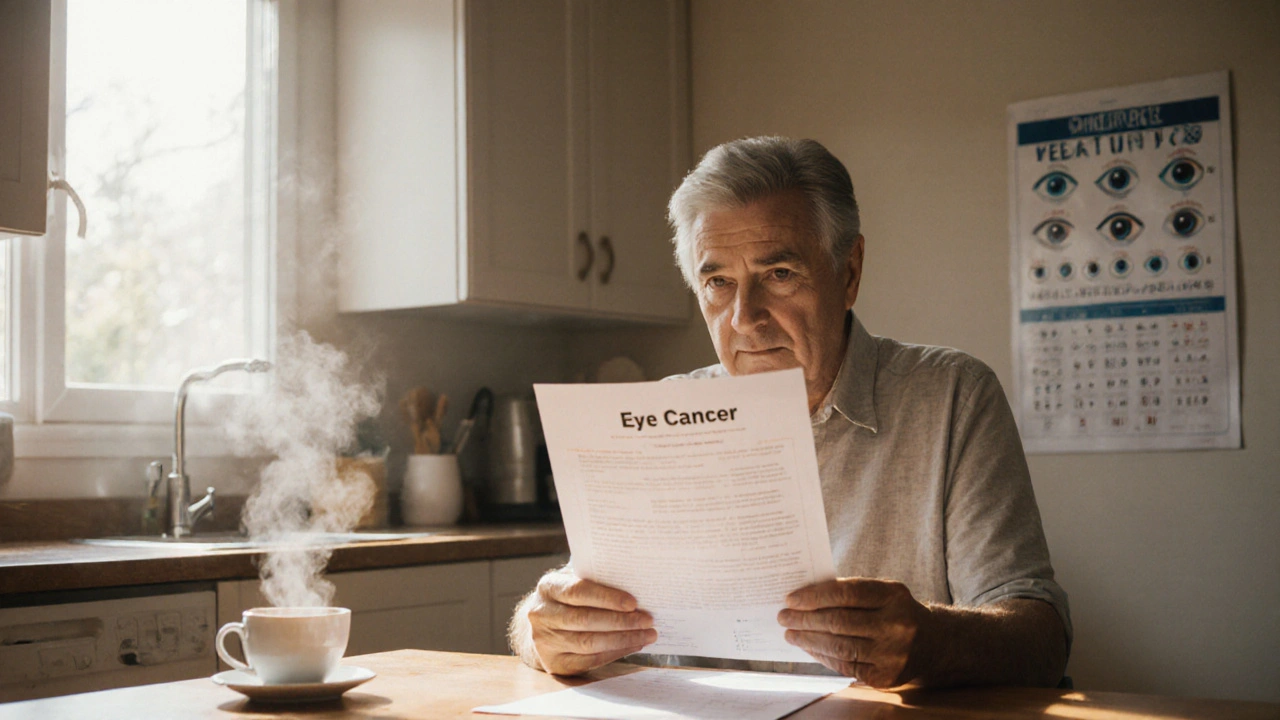
Eye Cancer Survival Calculator
When a diagnosis of eye cancer lands on the kitchen table, the first reaction is often shock, fear, and a flood of questions. You might wonder how it will affect your vision, your daily life, and whether a hopeful outlook can actually make a difference. This article breaks down the medical basics, shares the latest research on mindset, and offers practical steps to keep optimism alive during treatment.
What Exactly Is Eye Cancer?
Eye cancer is a group of malignant tumors that originate in the tissues of the eye or its surrounding structures. It can involve the retina, uvea, conjunctiva, or even the orbit. While it’s much rarer than skin or lung cancer, early detection is crucial because the eye’s delicate anatomy makes rapid spread a real concern.
Common Types and Who They Affect
The two most frequently discussed forms are retinoblastoma, a cancer that typically appears in infants and young children, and a malignant tumor of the retinal cells. The second major category is ocular melanoma, which usually strikes adults between 40 and 70 years old and arises from pigment‑producing cells in the uvea.
Below is a quick snapshot of the most common eye cancers, their usual age of onset, typical symptoms, and five‑year survival rates.
| Type | Common Age | Typical Symptoms | 5‑Year Survival Rate |
|---|---|---|---|
| Retinoblastoma | 0‑5 years | Leukocoria (white pupil), strabismus | 99% (early detection) |
| Uveal Melanoma | 40‑70 years | New visual floaters, blurred vision | 70‑80% |
| Conjunctival Squamous Cell Carcinoma | 50‑80 years | Reddish growth on the white of the eye | 85‑90% |
| Retinal Hemangioma (benign but can become malignant) | 20‑40 years | Vision loss, retinal detachment | Varies; early treatment often curative |
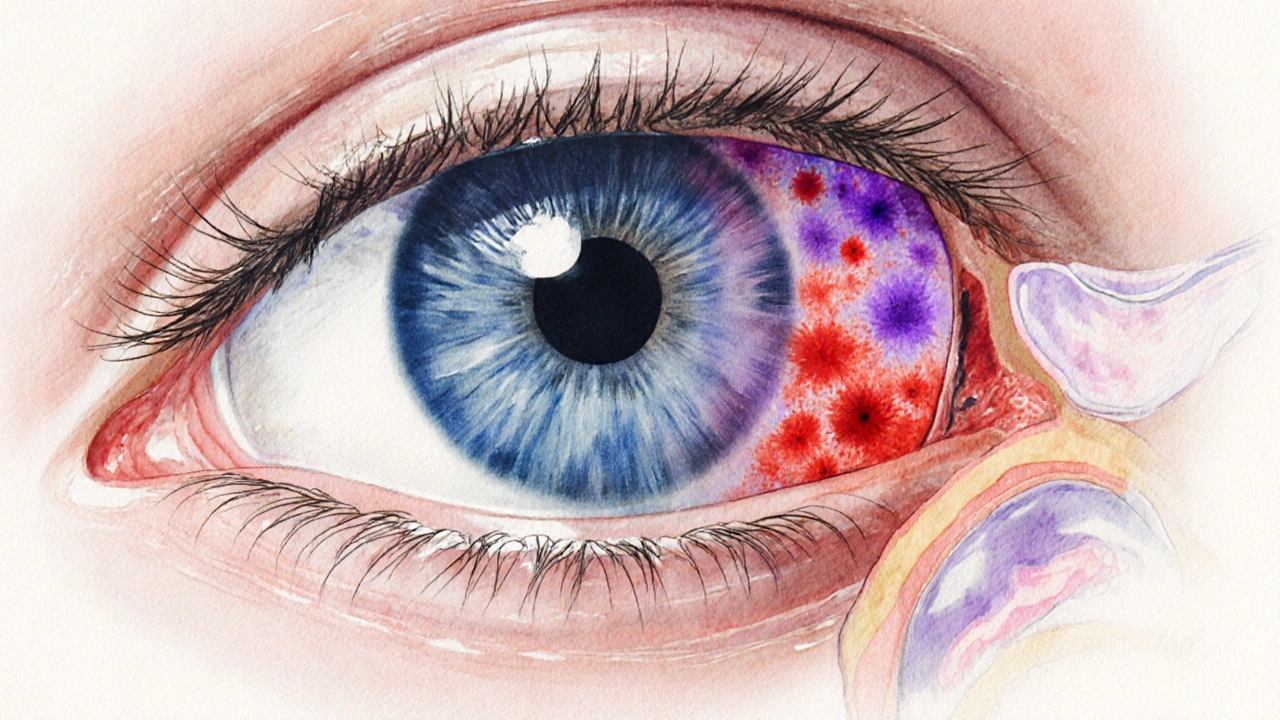
Standard Medical Treatments
Doctors typically start with a thorough eye exam, ultrasound, and MRI to map the tumor. Treatment options include:
- Laser photocoagulation - uses focused light to destroy small tumors.
- Cryotherapy - freezes cancer cells, often used for early‑stage disease.
- External beam radiation - targets deeper tumors, especially useful for uveal melanoma.
- Enucleation - surgical removal of the eye, reserved for large, untreatable tumors.
- Targeted therapy and immunotherapy - newer drugs that help the immune system recognize cancer cells.
Success rates have improved dramatically over the past two decades, thanks to precision imaging and less invasive methods. However, the emotional toll of treatment remains significant.
Can Positive Thinking Influence Outcomes?
Research on mindset and cancer isn’t about magical cure‑all vibes; it’s about measurable effects on stress hormones, immune response, and treatment adherence. A landmark study published in the Journal of Clinical Oncology found that patients who practiced structured optimism exercises had a 15% lower rate of treatment‑related complications.
Another trial focused on positive thinking
programs showed increased levels of quality of life scores during chemotherapy, largely because patients reported fewer side‑effects and maintained better nutrition.
These findings line up with a simple physiological chain: lower stress → reduced cortisol → stronger immune surveillance → better tumor control. While mindset alone won’t replace surgery or radiation, it can tilt the odds in your favor.
Practical Ways to Cultivate a Positive Outlook
Here are evidence‑backed techniques you can start today, even if you’re feeling overwhelmed.
- Gratitude journaling: Write three things you’re grateful for each night. Studies show a daily habit improves mood and reduces perceived pain.
- Guided imagery: Visualize the eye healing, blood flowing with nutrients, or a bright future. A 2022 pilot study linked imagery to a 10% increase in white‑blood‑cell activity.
- Mindful breathing: 5‑minute box breathing (4‑4‑4‑4 seconds) lowers heart rate within minutes, cutting the surge of stress hormones.
- Connect with others: Join a support group for eye‑cancer patients. Peer interaction boosts stress reduction hormones like oxytocin.
- Professional psychotherapy: Cognitive‑behavioral therapy (CBT) helps reframe catastrophic thoughts and builds coping skills proven to improve treatment compliance.
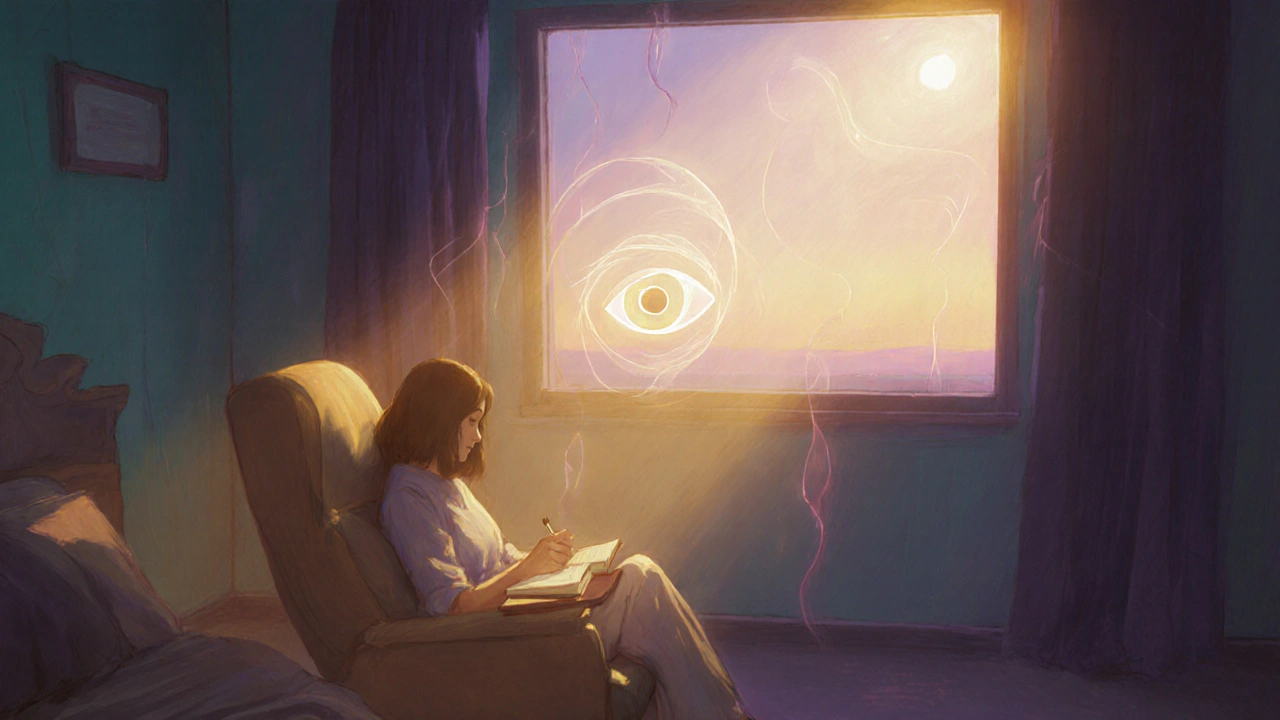
Supporting Emotional Health Alongside Medical Care
It’s easy to compartmentalize “medical” and “mental” care, but they’re deeply intertwined. Talk to your oncologist about referrals to a clinical psychologist who specializes in cancer. Ask about integrating immunotherapy with stress‑management programs - many leading cancer centers now offer combined clinics.
Don’t overlook practical needs either: arrange for transportation to appointments, set up a medication reminder system, and keep a symptom diary. When the logistics run smoothly, mental energy can focus on hope rather than chaos.
Key Takeaways
- Eye cancer includes several distinct tumors; early detection and targeted treatment dramatically improve survival.
- Positive thinking isn’t a substitute for medicine, but it can lower stress, boost immunity, and improve quality of life.
- Simple habits-gratitude, breathing, guided imagery, support groups, and CBT-have measurable benefits.
- Blend mindset work with your medical plan; ask providers about integrated psychosocial services.
Frequently Asked Questions
Can a hopeful attitude actually extend my lifespan with eye cancer?
Hopeful patients often experience lower stress hormones, which can improve immune function and reduce complications. While mindset alone won’t cure the disease, studies show it can add months to survival by helping the body respond better to treatment.
Is it safe to use meditation while undergoing radiation therapy?
Yes. Meditation is non‑invasive and has been shown to reduce radiation‑induced fatigue. Just keep the practice gentle and discuss any new techniques with your care team.
What are the most common early signs of eye cancer?
A sudden white or yellow glow in the pupil (leukocoria), new floaters, blurred vision, or an unexplained red spot on the white of the eye should prompt immediate evaluation.
Should I join an online support community or meet in person?
Both have benefits. Online groups offer flexibility and a wider reach, while in‑person meetings can provide deeper emotional connection. Choose the format that fits your schedule and comfort level.
Can my diet affect eye‑cancer outcomes?
A diet rich in antioxidants-berries, leafy greens, omega‑3 fatty acids-supports overall immune health. While no specific food cures eye cancer, good nutrition helps the body tolerate aggressive treatments.
20 Comments
Write a comment
More Articles
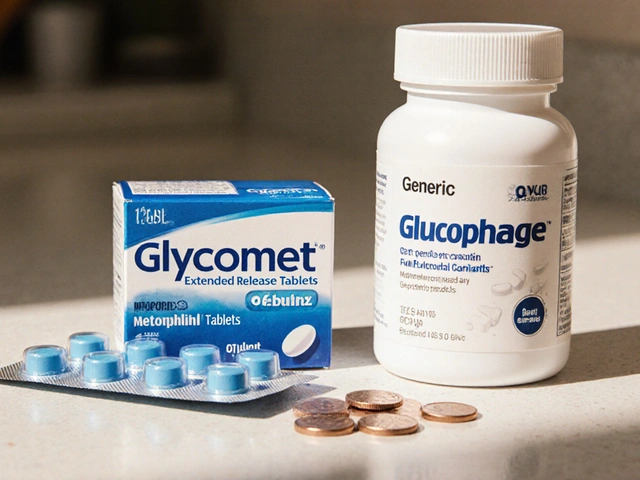
Glycomet (Metformin) vs Alternative Diabetes Drugs: Full Comparison
A detailed comparison of Glycomet (metformin) with generic metformin and newer diabetes drugs, covering efficacy, cost, side effects, and how to choose the right option.

Supercharge Your Recovery with Methylpentane: The Post-Workout Supplement You Need
I recently discovered an amazing post-workout supplement called Methylpentane that has truly supercharged my recovery process. This powerful ingredient helps reduce inflammation, supports muscle growth, and boosts overall performance. I've noticed a significant decrease in muscle soreness and fatigue after incorporating it into my routine. I highly recommend giving Methylpentane a try if you're looking to enhance your post-workout recovery. Trust me, your muscles will thank you!

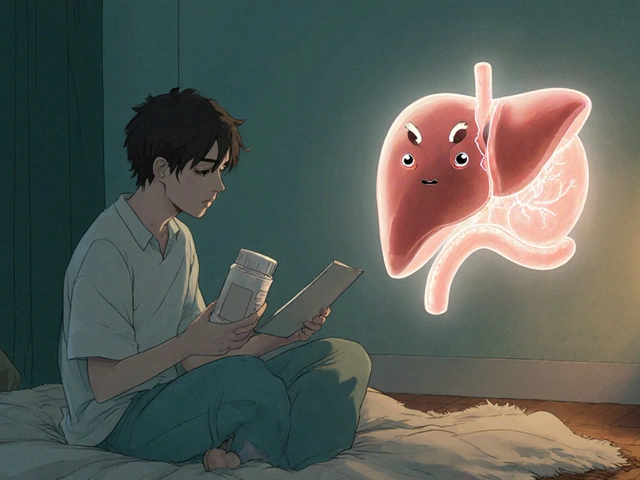
Geneva Lyra
October 7, 2025 AT 14:31I totally agree that spreading awareness about eye cancer is crucial, especially for families dealing with retinoblastoma. The survival calculator is a handy tool, but it shouldn't replace regular eye exams and early detection. It can spark important conversations, and sharing personal stories can make a huge difference. Remember, early intervention often definatly improves outcomes.